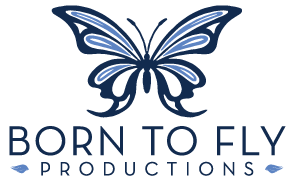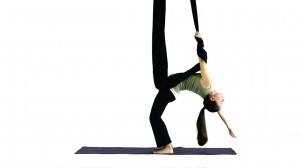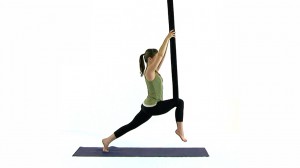After leading a teacher training recently, my thoughts turned once again to teacher topics and what makes a great teacher stand out above a good teacher. Good teachers keep students safe. They set up a safe environment through safe rigging and mats; they use proper progressions to ensure a student works at the correct level of moves; and they are respectful of all their students. I believe what takes a teacher to the next level is hidden behind their words, or more exactly: their cueing. Continue reading “Powerful Cueing; Making a Good Teacher GREAT!”
Category: Teaching
What it Takes to Be a Great Coach: Thoughts from Michele Frances
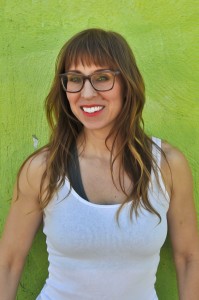
You may recognize the name Michele Frances as one of the trainers who has been working with Erin Ball, who was featured in our last blog. Michele is a multi award winning professional aerial coach & performer, Physical Therapist, Certified Pilates Instructor, and strength training specialist. Last year, she worked as a contract aerial coach for Cirque Du Soleil during the summer Kooza run in Austin, Texas. Michele was also nominated and voted “Best Silks Instructor of The Year” and “Best Silks Choreographer” by Miss Texas Pole Star in 2013 and 2014. Here is some seasoned advice about what it takes to make it as an elite coach.
It all started a little over 12 years ago. I had been working as a traveling Physical Therapist in Seattle, WA after moving there from San Francisco. By myself. Suffering from a broken heart (yep, I got dumped), I was doing everything I could to keep myself busy and not dwell. One morning at work a close co-worker at the hospital casually mentioned that she went on a date to a spectacular dinner theater show over the weekend (I believe it was Teatro Zinzanni), and she said: “Michele, I cannot explain it. I just kept thinking of you. You would have loved it. There were dancers on the ceiling swinging around and acrobats. The costumes where amazing”.
Way back then I did not even know what the term “aerial” meant, and I told her “that’s funny because I always wanted to try trapeze!” (visualizing traditional flying trapeze in my head). So, during my lunch break that day I googled “Trapeze lessons Seattle” and found my first aerial coach, Lara Paxton (founder of The Aerialistas & Circus Contraption). I called the number, assuming I would have to wait awhile to sign up but she said, “yeah, just show up tonight”. So I did, and many aspiring aerial students and professionals know this feeling; my life changed forever. I spent countless hours and lots of money learning in that funky old circus warehouse/airplane hanger for years to come. Over the next decade and beyond I traveled the country to learn from coaches at NECCA, Colorado, Chicago and San Francisco. By 2006 I had my own studio space where I offered physical therapy, Pilates and aerial lessons all under one roof. I also taught regular classes at my Seattle aerial home, Versatile Arts. These days-in 2016-you can usually find me teaching classes at my southern aerial home, Sky Candy, as well offering aerial workshops in cities across the United States.
Working as an aerial coach provides the perfect way for me to meld my background in physical therapy, kinesology, neurodynamics, Pilates, and injury prevention with my aerial skills. Having this extensive knowledge base of anatomy, arthrokinematics, and efficiency of movement has allowed me to help my students, and myself to achieve new skills that seemed out of reach. As an aerial coach I’d say my passion can be summed up in a handful of words: empowerment, nuance nerding, humor, and adaption.
Empowerment:
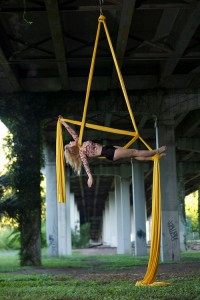
On a daily basis I witness the empowerment that aerial practice gives students, and it is a privilege to help them reach new goals. I love working with all levels and I specialize in coaching intermediate to advanced/professional students in silks, corde lisse, and single/double point sling. Having the strength to demonstrate skills in super slow motion, break down explanations for positional engagement, and provide visual/mental metaphors for body position comes from both physical and creative places within myself. These abilities as a coach allows me to customize tools and drills for students to unlock their current limitations.
For one example, I currently have a level 1 silks student who had been struggling with short arm holds for many months when I met her. After 5 weekly sessions during her first series with me, she was able to hold a short arm, hollow body hold for over 10 seconds. She achieved this by working on 4 different ground drills that I had customized for her. The look on her face when she realized that she was still holding after a few seconds was priceless. Being able to empower her with not just a new skill, but also tools to be involved with her own progress is invaluable to us both. Here is an example of a drill that that focuses on the core engagement and shoulder/elbow mechanics that I developed for those students who are struggling with inversions:
https://www.facebook.com/
Many of my students work full time for a living, and some of them have really tough jobs. Aerial classes are their escape, and for some their major social outlet and their source of joy. Watching a student’s demeanor, face and spirit literally change from run down and dragging to sparkling and excited within an hour long lesson is thrilling, infectious and so motivating. It’s like watching a plant that is starved for water and sunlight spring to life. I see aerial as a never-ending process, regardless of level. As a coach and a dedicated life long student I get to enjoy empowering my students and clients, and I get to feel that empowerment myself when reaching those small victories in my own practice. I’m pretty sure this internal feeling of empowerment is how the aerial addiction begins for all of us!
Nuance Nerding:
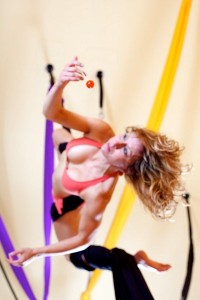
As a physical therapist for over 16 years I am a certifiable anatomy nerd. I coach every single one of my students as if they will be performers. This keeps a tight watch on form, efficiency and technique. I strive to break down every skill and fundamental building block even further down to the fine elements and muscular/joint nuances for engagement and proper position. I’m passionate about approaching everything from fundamentals to high level release skills & dynamic beats piece by piece. Dissecting these details associated with each skill including balance, grip position, rotation engagement, weight transfer and so on enables me to help students unlock where they may be blocked with regards to a new tough skill or transition.
After over a decade of training and teaching this way, I find it not only promotes the best possible form for each student’s current ability, it also makes my students more creative in the long run. This continuous approach has allowed me to find “new” ways of transitioning in and out of otherwise traditional or “old” skills. Focusing on the nuances trains the brain and body about wraps and breaks theory. I spend most days “nerding out” on how different transitions can be created, modified, and even be applied to another apparatus. Nuance nerding is also how I approach aerial choreography. Melting unique transitions from one skill into another and finding dynamic movement from static positions motivates me to create, and breaks me out of what is expected.
Humor:
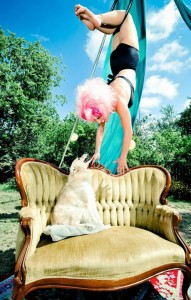
Even at my seasoned age, I still don’t know much about life, but I can tell you that if someone takes themselves too seriously, they probably will not get too far. Enjoy yourself, and learn to laugh at yourself. Find the funny in everything!! That’s how I HAVE to approach life, because that’s just me. I’m a very serious and picky coach (that’s what I’m paid for). However, my students usually leave with silly mnemonics or visuals for remembering and understanding drills, skills or sequences. I often hear “I’m never going to forget this now” if I offer a funny story, term or visual go to with an instruction. I just took a quick facebook poll today, and many of my current students and others from years past chimed in with the some of the “Michele-emisms” that they still use to remember things like: “napkin ring”, “jackie chan”, “kiss my grits”, “butt plunger”, “milking the cow”, “the tickle”, “no bread loaf”, “Michael Jackson leg”, “candy dish” and so many more. These silly sayings give automatic, clear visuals for physical tasks to everyone involved- even several years later. Humor my friends is effective, and for some as necessary as air.
Adaption:
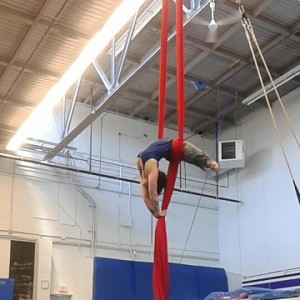
This a very exciting one for me, and I feel like it’s going to be bigger and more popular over the next few years. One of the most rewarding career experiences I have had recently is coaching a student in Canada. Erin Ball is an experienced aerialist who now uses bilateral lower leg prosthetics. She trained in aerial arts and acrobatics for sometime before an unexpected event left her with both of her legs amputated below the knee. Truth is Erin Ball is a ball of fire!! Working with Erin has really given me the chance to blend my physical therapy background with my aerial coaching skills. Helping her go back to some silks skills that she thought she might not do again and teaching her new ones (with and WITHOUT her legs on) has literally brought me to tears with excitement. Adapting an aerial apparatus and approach to accommodate for a physical limitation, age, weight/size, blindness, and more brings me right back to that first word: Empowerment. Being able to empower these students is the best reward as a coach. Adaptive coaching for adults opens a whole new world of possibilities.
To become a Physical Therapist I followed a predetermined career path that I had set out to complete. This path included years of consecutive college courses, clinical internships and national testing exams. Conversely, I never truly set out to become an aerial coach. My interests, skills, passion and abilities led me to it. It is these personal individualities that drive me to add to my tool box, and consistently grow every session. There is no designed program to become a coach. Sure, there are some solid “aerial teacher training” programs that provide entry level teachers the essential foundations for basic skills and spotting; however, it takes years of experience, continued training, and practice in other related fields of movement (fitness, dance, Pilates, therapy) to truly find YOUR own voice as a coach.
Learn more about Michele Frances at her website, MicheleFrances.com
You can also find her on Facebook at: Facebook.com/michele.frances
All photos in this article are of Michele Frances, except the last one of Erin Ball.
Do you know of a great coach who has words of advice to share with us? Send us their name, or perhaps it’s you! We welcome guest blogs on our site. Send us an e-mail at info@aerialdancing.com.
Approaches to Building Sequences for Aerial Yoga
I wanted to take a moment to go over a few types of sequence that you can use in your Aerial Yoga Classes. We have been training many teachers lately in the art of aerial yoga, and much of the training tends to focus on individual poses. The first way to further your training is to start building those poses into sequences. That is a whole art in and of itself. And guess what?! This website is here to help you – we have aerial yoga sequences ready for your viewing pleasure, complete with voice-over instruction.We have different types of sequences, and also have sequences from different teachers to give you fresh and different perspectives.
In this blog, I’d like to discuss three specific approaches that are my personal favorites: the Apex Pose Approach, the Ladder Approach, and the Body-Part Target Approach
The APEX Pose Approach
One way to create a sequence for your aerial yoga class is to build it backwards from a specific, challenging pose. For example, camel is no starter pose. Camel requires the hamstrings to be engaged and fully firing. Camel requires the hip flexors to be open (to allow the hamstrings to effectively work), and the core, as well as spine, needs to be warmed up up and ready to operate. So, with this apex (also known as peak) pose in mind, choose moves that will get you there.
In this wheel example, you might start with a general body warm up that could include some cat cow to start warming up the spine. You might start with some light hip flexor openers, then pick a move that engages the hamstrings. This also has the advantage of bringing heat into the body. With that new heat, you can circle back to hip flexor opening, going deeper this time with the blood flowing and heart pumping oxygen to the whole body. In this way, you are warming up the whole body, getting muscles ready to fire, plus focusing on opening the muscles you want open, and engaging the muscles you want engaged for your climatic moment: the Apex Pose (dramatic music here). You should get there around 3/4 of the way into class. After that, it’s all downhill. After that, use the spirally downhill energy of the apex move to get deeper into select stretches, include some gentle counter poses and cool down the body.
For an example of a sequence that is exactly what is described here, log in to your paying account to view our latest supported camel sequence.
The Ladder Approach
I have no idea if “ladder sequence” is an official term or a term that I just made up on the spot. It just seemed to be the right fit. “Ladder Sequence” is the name I give to a sequence that climbs up in progression, each time adding something new. It’s like stepping up to the first rung of the ladder, then stepping down. Then stepping to the second rung, and stepping down. Then stepping to the third rung, and you got the point.
Recently, we uploaded a ladder sequence designed by Amy Tynan into the aerial yoga section of our Video Library. (Login to view!) The sequence revolves around some grounded lunge work and ladder climbs into diaper wrap. The first time you go through the sequence, it stops at the straddle inversion. Then you repeat. The second time adds the crocheted legs. etc. The third time adds a ball crunch, and the fourth time around you complete the ball crunch to pull all the way up into diaper wrap. Each time the sequence is repeated, you switch which leg goes into the crescent lunge, so at the end of the sequence, you have complete two full set of grounded lunge workouts on each leg. (This is an awesome bonus to whole ladder idea.) Each time through the sequence adds other progressions and challenges that can be added as students get more experienced with the sequence. The video in our library shows the full progression through to the end.
The Body-Part Target Approach
I couldn’t think of a better name for this approach, so I called it what it is (I guess). In this approach, you pick specific body parts and focus on those. However, it’s generally good practice to focus on the whole body too. Like every rule, there are exceptions, and there may be days when maybe you do focus on one muscle group for an hour. It’s like getting a massage. It’s nice if the masseuse does a full-body rub down even if the focus is your neck and shoulders. She might spend more time there than at any other body part, but all of relaxation only further helps promote the relaxation of the neck and shoulders. Every once in a while, especially if time is short, she may just simply focus on the neck and shoulders. period. Well, it’s just like that for a yoga class. You could focus on one body part the whole time, or maybe more, or maybe just try to get a little bit of everything. Bonus points for having several sequences pre-planned and then poll the class to see what body part they would like to focus on that day. Maybe it’s the hips that day, or maybe it’s the legs. The other day, I really wanted to focus on bettering my splits for fabric, so I wanted to focus on lengthening/opening my tight legs. Guess what? I also uploaded that video into the library at AerialDancing.com! If you are logged in to your member account, go here to view that sequence.
Well, that’s all folks. Hope this brief lesson on sequences has inspired you to try a new approach to creating an aerial yoga sequence today.
Rebekah Leach is in love with aerial yoga, especially since having two kids and two surgeries. She views aerial yoga as the best way to gradually build the strength and flexibility needed for the other aerial arts. It is also whole and complete for the body as its own thing.
